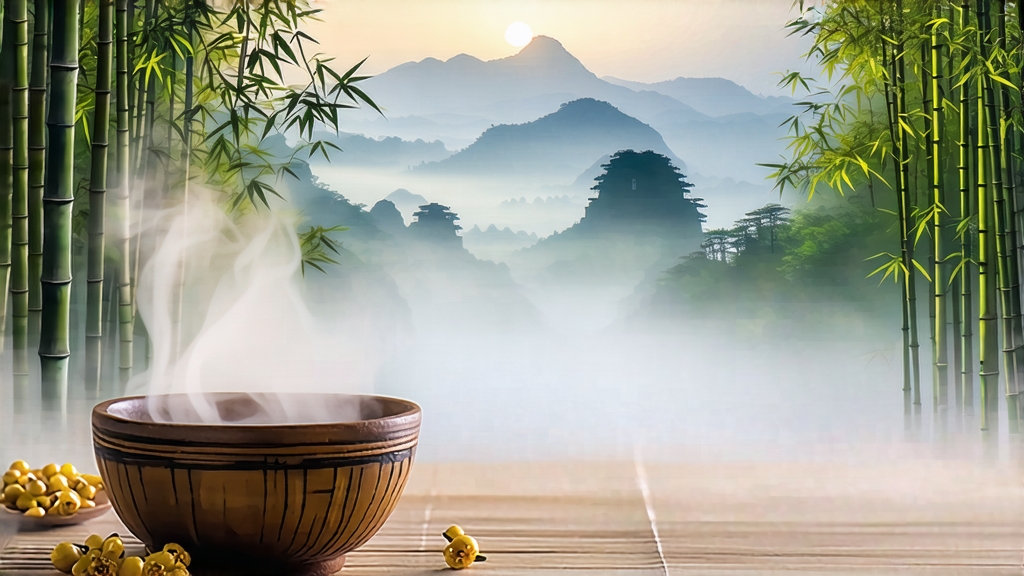
Tucked high in the western Dabie Mountains of Anhui province, the small county of Huoshan guards one of China’s most elusive tea treasures—Huoshan Huangya. While green tea and pu-erh have conquered foreign shelves, this yellow-tinged leaf remains a quiet legend, once sealed in bamboo tubes and rushed by horseback to the Forbidden City. To meet it is to step into a vanished chapter of Chinese taste, when emperors judged tea the way sommeliers judge grand cru, and a single bud could earn a farmer the rank of imperial artisan.
History: from tribute to obscurity
Song dynasty records (960-1279) already praise “Huoshan yellow sprouts,” but the tea’s golden age arrived under Ming emperor Wanli (r. 1572-1620). Each Qingming festival, before the mountain snow had fully melted, magistrates escorted armed convoys of the first seventy-two liang (about 4 kg) to Beijing. The court’s Board of Tea graded it “first among yellow teas,” reserving it for the imperial ancestral altars. When the Qing fell in 1911, the delicate processing secrets survived only in family lineages of three villages—Foziling, Jinjiaping, and Wufu’an—before being revived in 1972 when Premier Zhou Enlai, nostalgic for the flavor of his youth, ordered a state-led restoration. Today less than fifteen tons reach the market annually, most still allocated to government banquets and state gifts, making authentic Huoshan Huangya rarer per capita than bluefin tuna.
Micro-terroir: why the mountain makes the yellow
Huoshan lies at 31° N, the same latitude as India’s Darjeeling, but the similarity ends there. A granite spine thrusts the gardens between 600 m and 900 m, trapping clouds that cut sunlight to four hours a day in early spring. The resulting slow photosynthesis concentrates theanine, while cool nights inhibit catechins, giving a naturally sweet broth that needs no added “yellowing” time later. Soils are Phyllite weathered to a sandy loam, pH 5.2, laced with selenium leached from prehistoric volcanic ash. Around the terraces, giant bamboo (Phyllostachys edulis) releases aromatic resins that coat drifting dew; farmers swear the leaf absorbs this “bamboo soul,” a romantic way of describing the terpene-rich aerosols that later echo in the cup’s faint sugar-cane note.
Varietals within the yellow: bud grades and plucking code
Unlike green tea, where any leaf can be pressed into service, Huoshan Huangya is a bud-only tea, but not all buds are equal. The traditional plucking code reads:
- Mingqian Imperial Sparrow Tongue: 1.5–2 cm unopened spear, picked before Qingming, 7 000 buds yield 100 g.
- Guyu Golden Tips: two days after Grain Rain, bud just beginning to unfurl, still 95 % downy.
- Spring Equinox Sparrow Beak: a later hybrid grade allowed one tiny leaf attached, created in the 1980s to meet export price points.
Purists dismiss anything beyond the first grade as “half-yellow,” yet even these lesser lots must pass the county’s 2006 geographical-indication law: buds harvested outside the core 43 km² zone, or processed without the mandated menhuang step, may not bear the name Huoshan Huangya.
The secret menhuang: science inside the yellow veil
Yellow tea’s identity rests on a unique micro-fermentation called menhuang—literally “sealed yellowing.” After kill-green at 160 °C in a bamboo-fuelled wok, the buds are piled 8 cm deep inside oak boxes lined with wet linen. For the next 48–72 hours the leaf respires at 28–30 °C and 85 % humidity, losing 4 % moisture while non-enzymatic browning converts chlorophyll into pheophytin and triggers Strecker degradation of amino acids. The result is a mellowing of grassiness and the birth of 2-acetyl-pyrroline, the same “popcorn” aroma found in basmati rice. Master Huang Yongxin, fifth-generation, judges readiness by pressing a bud between forefinger and thumb: “When the spine cracks but the down still clings, the leaf has agreed to be yellow